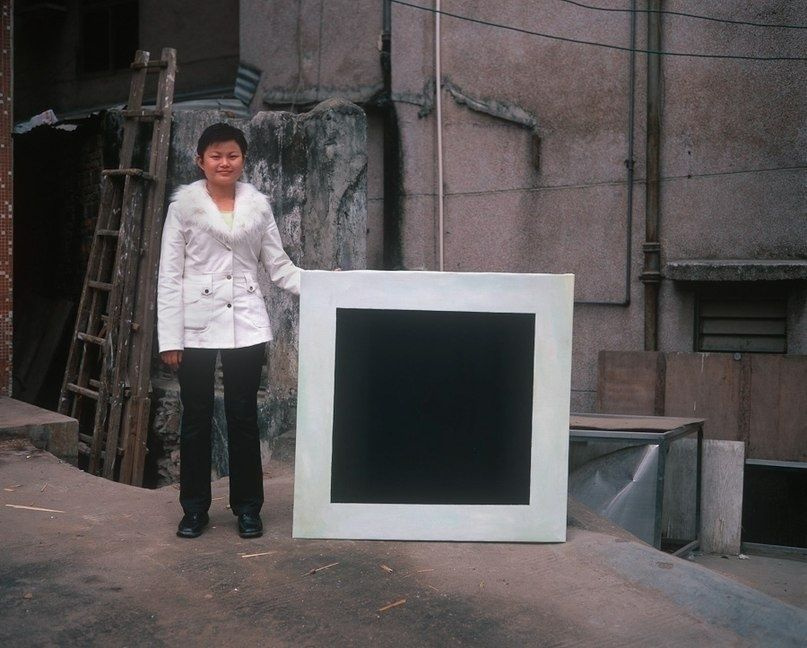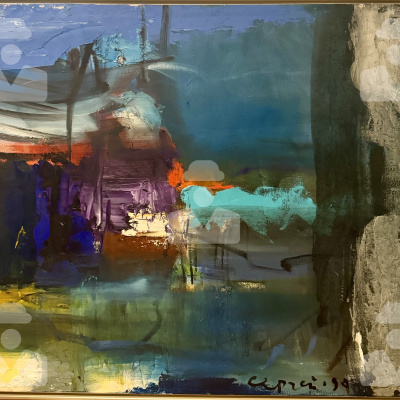Do you want to have a Dalí's masterpiece to cover the yellowed wallpaper, without spending all your money and going broke? Call a copyist: the hand of an experienced artist will not falter to repeat the lines after geniuses. A guest’s naked eye is unlikely to suspect a fake, and in case of a robbery, you’ll easily order another one. But if you have the opportunity to fork out for the original, remain vigilant and beware of art fakes, as there are plenty of them thanks to the talent of the very copyists.

Manet in a week, La Gioconda in a month
Many canvases are hidden from the eyes of ordinary people in private collections, so the only way to access them permanently is to order a copy. Someone calls copying famous paintings a profitable craft. However, a copyist is primarily an art artisan. Painstaking work to order requires meticulousness, the artists select suitable shades of paint for a long time and "age" the canvas with artificial cracks. In addition, the author cannot do without studying the epoch of the original. The time it takes to complete the painting depends on its complexity.The craftsmen often work in a queue: the second and the third one perfect the image made by the first.
Those who are readily copied today, such as Van Gogh, Raphael, Gauguin and Leonardo da Vinci, did not disdain to repeat the plots of their idols. In 1640, Rembrandt created a self-portrait, which was a copy of Titian’s Portrait of a Young Man. This way of teaching painting was extremely popular in Europe during the Renaissance .
Historians also remember stories about copies of pictures. According to one of them, during his visit to the USSR in 1955, the leader of North Korea Kim Il Sung, who was unexpectedly keen art lover, fell in love at first sight with Konstantin Makovsky’s painting, Children Running from a Thunderstorm. He commented it: in his opinion, brave Korean kids simply could not be afraid of the element, so they had to desperately rush to meet it. Therefore, the General Secretary of the CPSU Central Committee asked the artist Viktor Deryuzhkin to create a slightly modified copy, wishing to add a dog of his favourite breed to the composition.
According to the popular British copyist Susie Rae, there is an unspoken rule: the copy must be inferior to the original in size, and the creator must put his signature on the back. In addition, you can only copy authors who have died at least 70 years ago.
Time-tested "hits" are bought the most. Andy Warhol is the leader among the artists who have been recently ranked for the pantheon of classics.
Often, the income of copyists significantly exceeds the income of their half-starved predecessors whose work they copy. Some copies are estimated at tens or even hundreds of thousands of dollars. The most expensive artistic luxury duplicate is considered to be La Gioconda of precious stones by Chinese craftsmen. The jewellery copy, according to experts, costs $ 3 billion. But the name of da Vinci is familiar to every schoolchild, whereas the author who made money on its repetition is known next to nobody.

La Gioconda of precious costs $ 3 billion
Matisse, not Abibas!
In China, "everything is made to order, even children". The Celestial Empire is the undisputed leader in copying not only iPhones and fashionable clothing brands, but also the creations of the classics of painting: up to 70% of the total number of paintings created in the world are produced here. It got to the point that the technique of fast and high-quality reproducing was ranked as an intangible cultural heritage and a way of replenishing the state treasury. Of course! After all, the skill of a Chinese copyist allows him to create up to 30 paintings per day. At that, Van Gogh is sold for only $ 75 here, and the good old Warhol, even less, for $ 45.Residents of the town of Dafencun do not have to spend money on tickets to museums: there are enough exhibits on the streets of the southern China province. It is noteworthy that not only the heritage of the recognized artists is copied here, but also that of modern authors, such as the German photo innovator Helmut Newton. Although wealthy Chinese, unlike tourists, prefer portraits of military leaders on horseback rather than elegantly naked girls. Most often they paint from photos, supplying Raphael, Dalí and Manet to almost all continents. The high professionalism of Chinese copyists was even used by counterfeit sellers who passed them off as originals.



Outlaws
However, not all copies are harmless. Illegal artists also work in the art field. In 2013, the family of Izmailovo businessmen manufactured and sold forgeries of Goncharov and Malevich on an industrial scale. A professional copyist from Desnogorsk collaborated with the swindlers. Fraudsters sold pseudo-avant-garde artists for 13 million roubles. According to their legend, the canvases were in the collection of a certain rich man from Samarkand.And in 2010, the antique master Samvel Abazyan, who sold fakes of Aivazovsky and Bryullov for $ 4.5 million, was criminally liable. Museums are much better protected from falsifications than private collectors. But even at the eminent art auctions, one may face fakes. So, in 2011, a fake painting by Leonardo da Vinci was auctionned at Sotheby’s, and in 2012 the Christie’s auction house sold a fake painting by Russian artist Boris Kustodiev. Dalí, Gauguin, Renoir, Van Gogh, Monet, Cézanne and Klimt are still actively forged.
Modern painters also become forgery victims. Ukrainian artist Eugenia Gapchinska faced the fact that copies of her works were sold several times cheaper than the originals. Moreover, a street artist can draw them for you in any park in any city. Copyists even immodestly forge the signature in the corner. Everywhere they decorate bags with prints of Gapchinska’s paintings, put these images on magnets, print them on posters. Given this scale, protecting the artist’s copyright is not easy.
Russian conceptualists Vinogradov and Dubossarsky also complain about the appearance of foreign "clones" of their works. This fact, on the other hand, is another confirmation of the growing popularity of the authors. Indeed, perhaps, among the living artists, only this duet has won such attention from dishonest colleagues.














